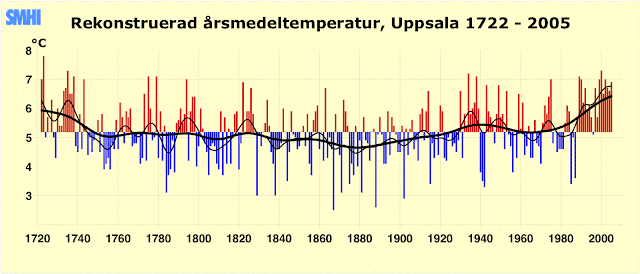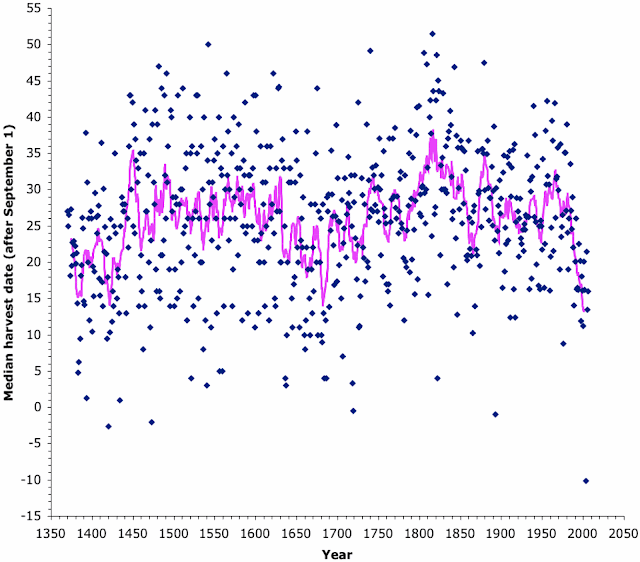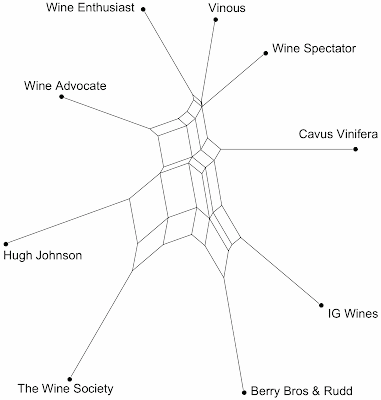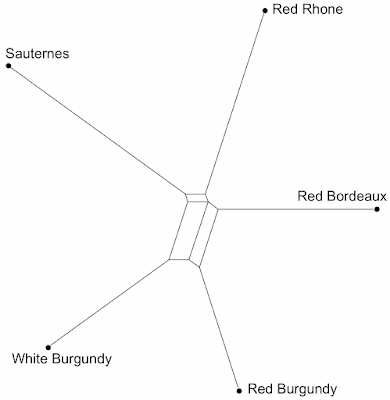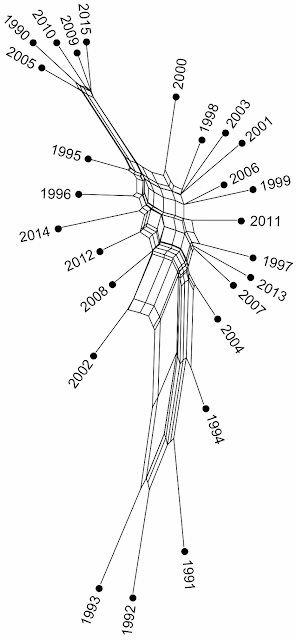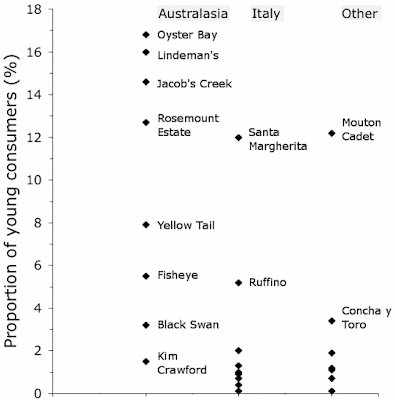Climate change is a big issue for all parts of the agriculture industry, not just grape-growing, because of the industry's almost complete reliance on the weather, which determines both the timing and the size of each harvest. Climate change thus leads inevitably to agriculture change. At the moment, the changes seem to consist of an increase in variability from year to year, from boom to bust. This is no way to try to make a living.
Global warming first became a big news story in 1988, which had the then hottest northern-hemisphere summer on record, with widespread droughts, and with fires from the Amazon rain forest to Yellowstone National Park. It is now 30 years since that time, and there are still climate-change skeptics running around, notably in Australia and the USA.
It is thus important to note that there are three separate issues related to the current concern about global climate change:
- evidence that temperatures have increased recently
- ideas about what might be causing this increase
- and what, if anything, we might do about it.
The first of these issues seems to be unproblematic — every country on Earth has a Bureau of Meteorology of some sort, and as far as I know they have all been recording a slow but steady increase in world temperatures for at least 5 decades now. Furthermore, as discussed below, we have temperature records that go back 6 centuries that show the current temperatures to be unprecedented during that time.
The second point may be slightly more problematic, although the consensus is that the cause is increased carbon dioxide (CO2) in the atmosphere. Many people do not know that the idea that our climatic temperatures are determined by atmospheric gases actually dates back a century, now. So, I will look briefly at the history in the next section.
I guess that it is the third point that is the problematic one for the skeptics. They ask: "why should we do anything?" To me, the answer lies on our formal taxonomic name, Homo sapiens, which is Latin for "thinking person". Not only can I learn to use a screw-driver, which most other species cannot, I can think about my effect on the world, and about what sort of world I would like to live in. Maybe, just maybe, it is our effect on the world that is causing the sort of world we currently live in.
Atmospheric carbon
It was back in the 1820s that Joseph Fourier realized that some of sunlight's energy must be held within the atmosphere, helping to keep the Earth warm. It was thus apparently he who first concluded that Earth’s air layer acts like a greenhouse — energy enters through the transparent "walls" and is then trapped inside. It was 40 years later that John Tyndall tried to work out what kinds of atmospheric gases were most likely to play a role in absorbing sunlight, and demonstrated that CO2 is the principal culprit.
It was not until the 1890s that Svante Arrhenius started to wonder how much CO2 decrease was required to explain the Earth's cooling during past ice ages (as was apparent in the geological and fossil record), and what would be the effect of similar CO2 increases. It is ironic that he wrote:
By the influence of the increasing percentage of carbonic acid [CO2] in the atmosphere, we may hope to enjoy ages with more equable and better climates, especially as regards the colder regions of the Earth.In the 1930s, Guy Stewart Callendar first noted that both the United States and the North Atlantic region had warmed significantly, on the heels of the Industrial Revolution. Sadly, this observed effect was then counter-balanced by the subsequent 30 years of global cooling, now attributed to aerosol pollutants blocking the entry of sunlight. So, it was thus not until the 1970s that the start of the current long steady increase in global temperatures became clearly evident in the world's many meteorological records.
Long-term temperature records
The problem with "long-term" records is that we haven't been accurately measuring anything for all that long, in the big scheme of things. Take, for example, our records of the amount of CO2 in the atmosphere, as shown in the first graph.
The Scripps Institute of Oceanology did not set up the Mauna Loa Observatory (on a mountain in Hawaii) until 1958, which is our main source of instrumental measurements of global carbon dioxide. So, we have to use indirect measure of atmospheric CO2 before that time, as in the graph. This makes it a bit tricky to show that CO2 has increased since the Industrial Revolution, which is a key part of connecting global warming to atmospheric gases.
Temperature, on the other hand is a bit easier to measure. Many of you will know that the international scale for measuring temperature is named after Anders Celsius (not that other scale, named after Daniel Fahrenheit, and now used by only a few countries). Celsius was professor of astronomy at Uppsala University, in Sweden, and so it should come as no surprise that the longest daily temperature record in the world is from the city of Uppsala.
Mind you, even that is not as simple as it seems. In the early years, for example, the temperature was recorded only on week days, not every day; and, of course, the instruments used were not as good as those used today. Nevertheless, the yearly averages from the year 1722 are shown in the next graph. Note that the numbers shown are the averages of the 365¼ daily average temperatures each year — if you want more details, then you can also look at the seasonal average temperatures here.
Note that the interest is in temperature change, and so the graph is centered on the long-term average temperature, with blue years being below average and red years being above average. The recent cluster of warm decades is pretty obviously anomalous over the 3 centuries shown. Aside: being a Swede, Celsius was interested in how cold it gets, not how hot it gets, and so his original scale had water freezing at 100 °C and boiling at 0 °C — it was some time before it was inverted to the current form.
If we stick to the idea of yearly temperatures, then we can actually go back a bit further than the daily record. Gordon Manley has compiled the monthly mean temperatures for the Midlands region of England from the year 1659; and these are shown in the next graph, from the American Association of Wine Economists. Once again, the recent trend is clearly anomalous. [Note that the Midlands is on average 4°C warmer than the Uppsala region!]
Finally, I have noted before (Grape harvest dates and the evidence for global warming) that grape harvest dates can be used as a reasonably accurate record of annual (summer) temperature variation, although obviously not as good as instrument measurements. There are formal records for the Burgundy region of France that go back to the late 1300s, which takes us back another 3 centuries before the above graphs. The data are shown in the final graph — as before, the recent trend is completely anomalous.
Conclusion
Points 1 and 2 listed above do not seem to me to require much discussion, even by skeptics — we have clear temperature records, and we know how carbon dioxide works. Fortunately, for many people point 3 has moved beyond discussion, and into action.




